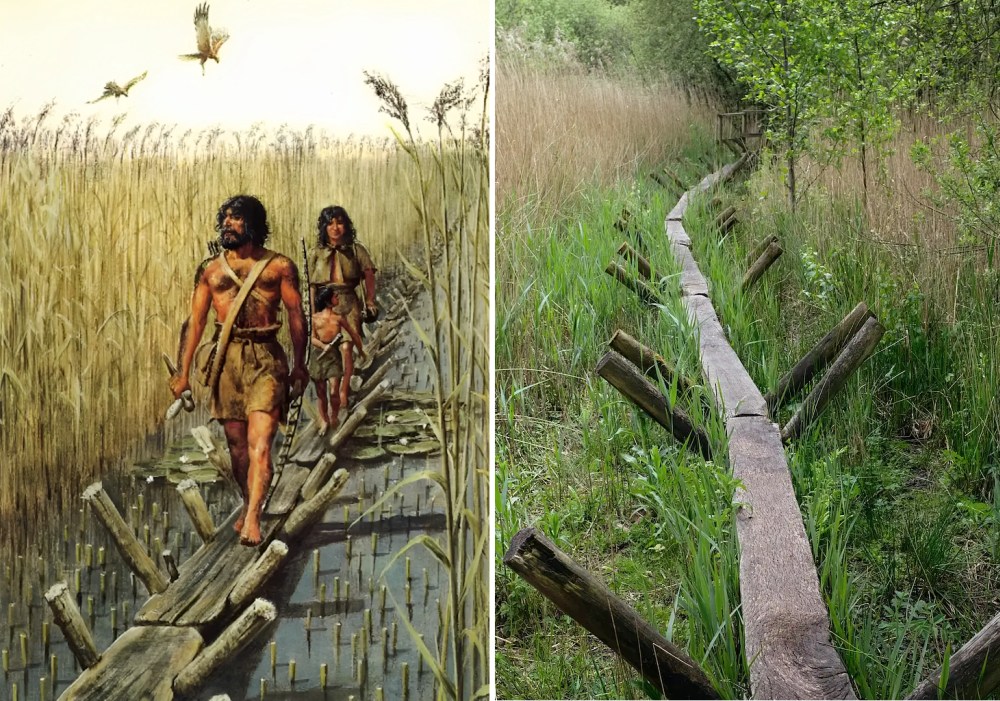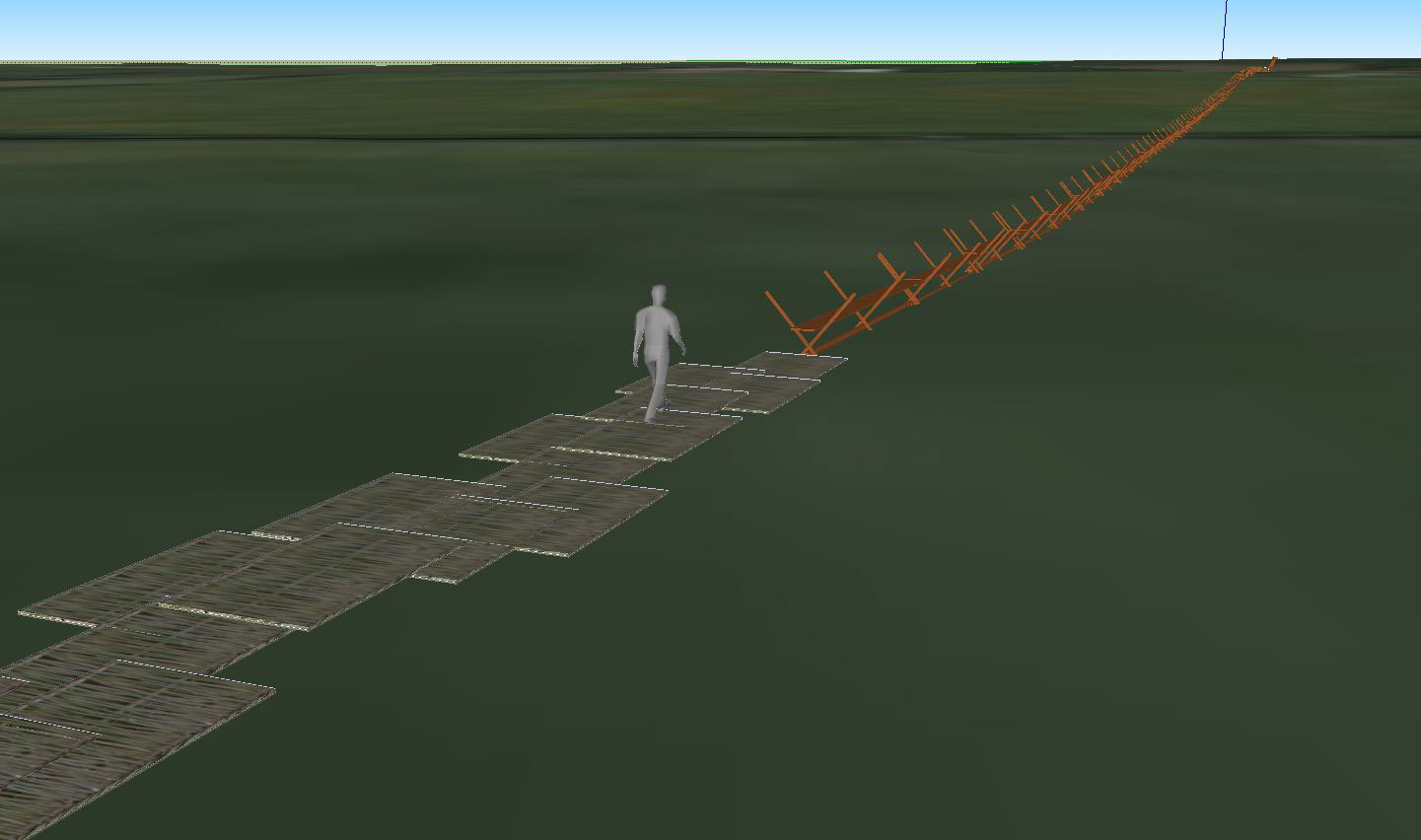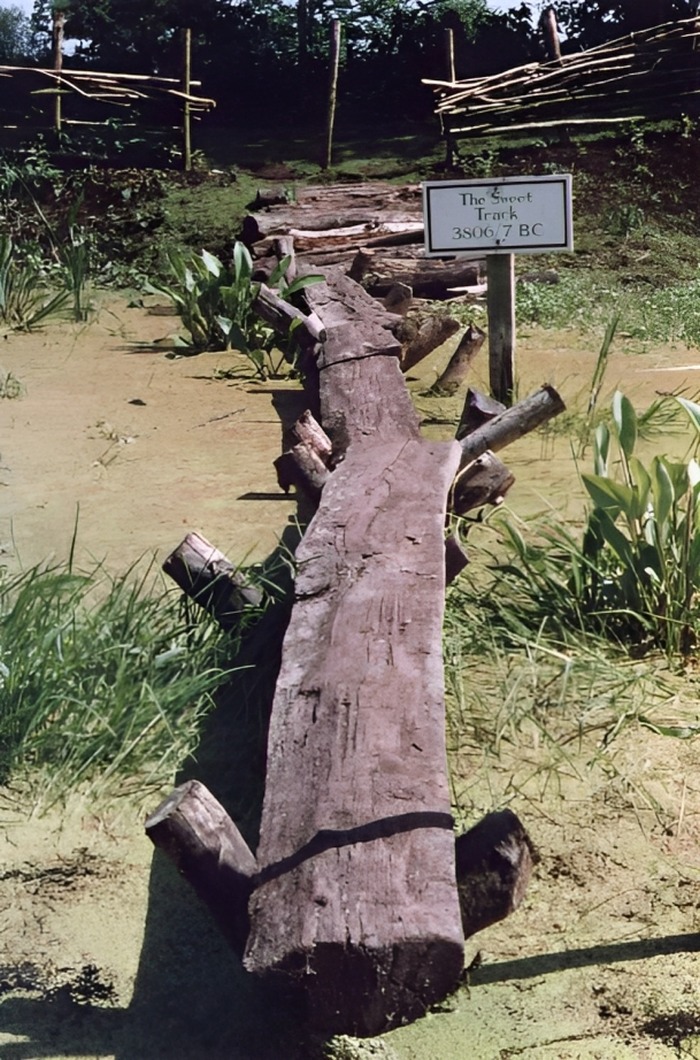The Sweet Track in the Somerset Levels in England is one of the few places in the UK that gives you a rare glimpse into what it was like to be alive 5,830 years ago.

An ancient pathway criss-crossing the beautiful Somerset flatlands. Illustration by E.Mortalmans / Source
The Sweet Track is an ancient timber causeway located in the Somerset Levels in England. It was built around 3807 BC, making it one of the oldest known engineered roadways in the world. The causeway was discovered in 1970 during peat digging in the area and has since been studied extensively by archaeologists and historians. Its age was determined using dendrochronology (tree-ring dating) of the timbers, which enabled precise dating.
The track was once part of a system of pathways constructed to create a dry passage through the marshy terrain. It stretched from a former island located in Westhay to a nearby ridge of elevated land near the River Bruce, a distance close to 1,800 metres (5,900 ft). Additionally, mounds have been discovered in Westhay, which suggest the presence of a settlement in the area.

Digital reconstruction of the Sweet Track, southern end. Image credit: Henry Rothwell
The Sweet Track was built using intersecting wooden poles that were driven into the marshy ground to serve as a foundation for the primarily oak-plank walkway. It was only utilized for a brief span of approximately ten years, after which it was abandoned, likely due to the increasing water levels in the area. This may have contributed to the fact that the structure has been extremely well-preserved and parts of it still stand today.

The Somerset Levels are characterized by their wetland and peat environments, which have a natural propensity for preserving organic materials. The combination of damp and oxygen-deprived conditions can inhibit decomposition to some extent, leading to the recovery of wooden artifacts and structures from the area. Additionally, two exceptionally well-preserved Iron Age villages, Glastonbury and Meare, have also been uncovered in the region.

A remaining section of the Sweet Track at the Somerset Levels. Image credit: Sheila Russell
The community that constructed the causeway were a group of Neolithic farmers who settled in the Somerset Levels around 3900 BC. The community seemed to be well-organized and established at the time of its construction, according to available evidence. Prior to the arrival of these settlers, the upland regions surrounding the Levels were heavily forested, but the inhabitants began to clear the forests to create a predominantly pastoral economy with limited cultivation.
During the winter, the flooded areas of the Levels provided an abundant source of fish, wildfowl, and foraging opportunities for the farming community. In the summer, the drier areas offered ample open grassland for grazing cattle and sheep, as well as reeds, wood, and timber for construction, and a bounty of wild animals, birds, fruits, and seeds.
The need to reach the islands in the marsh was significant enough to prompt the community to engage in the immense collective effort required to amass the timber and construct the causeway, likely during a dry period when water levels were at their lowest. The construction work demanded advanced woodworking skills and suggested some division of labor among the workers. It also appeared that the community had been managing the surrounding woodland for at least 120 years.

Reconstruction of the Sweet Track at the Peat Moors Visitor Centre. Image credit: Andy B
To construct the Sweet Track, the Neolithic community used stone and flint axes to fell trees on dry land. They employed different cutting techniques based on the age of the trees, with older oaks cut vertically and younger trees cut tangentially. To determine the methods of cutting employed, modern researchers have examined the cut marks and conducted experiments using replica axes.
The planks of wood were assembled in the marsh, with the entire construction taking approximately one day to complete. The builders drove long poles slantwise into the ground, then laid planks between them and secured them in place with vertical pegs. The planks were made of oak, ash, and lime, while the poles and pegs were predominantly made of hazel and alder.
Diagram showing a cross section of the Sweet Track. Image credit: Richerman
The area also has the remnants of another track, known as the “Post Track,” which predates the Sweet Track by 30 years, dating back to 3838 BCE. The Post Track ran parallel to the Sweet Track and may have been used by the builders of the Sweet Track as an access route.
There have been many other Prehistoric trackways found in England, but more than half of them were discovered in Somerset. The Sweet Track is the most famous of these and has been designated a scheduled monument of national importance. The majority of the track remains in its original location and needs ongoing preservation to maintain the wood in its damp state. Replicas of it have been made, and a donated section now resides in the British Museum in London.
Section of the “Sweet Track” walkway on display at the British Museum. Image credit: Trustees of the British Museum
The Sweet Track was long though to be the oldest roadway in the world, until the discovery in 2009 of a 6,000-year-old trackway built in 4100 BC, in Plumstead, near Belmarsh prison.
Written by Tamás Varga
A sociologist and English major by degree, I’ve worked in the area of civil society & human rights and have been blogging in the fields of travel, nature & science for over 20 years.



